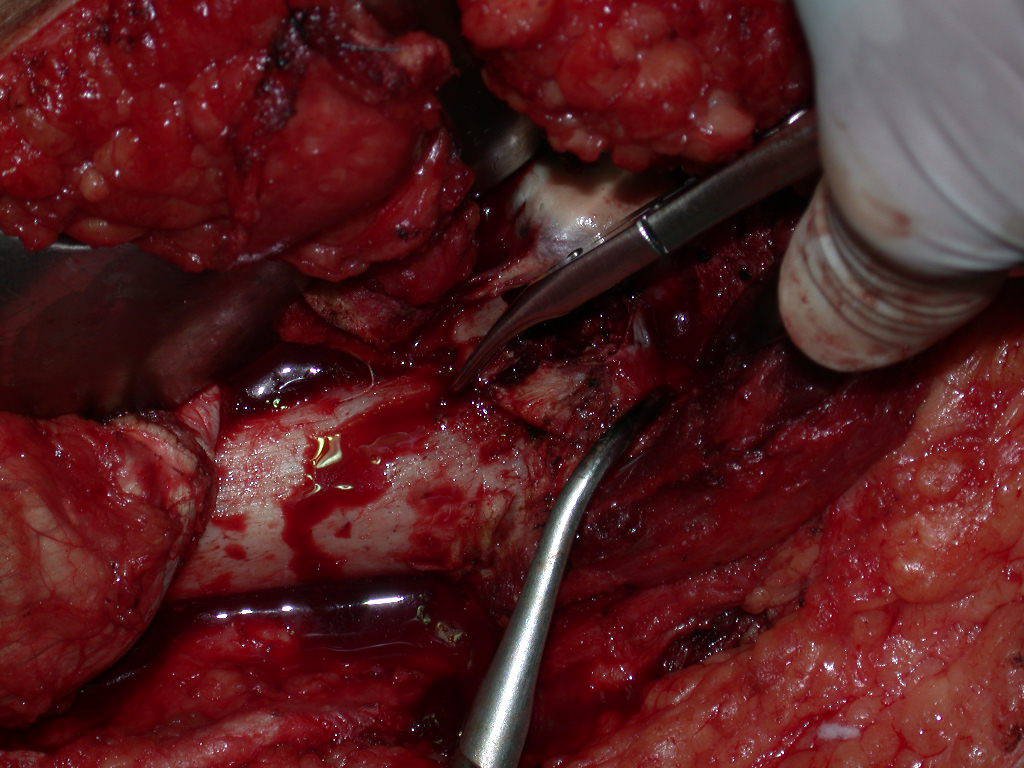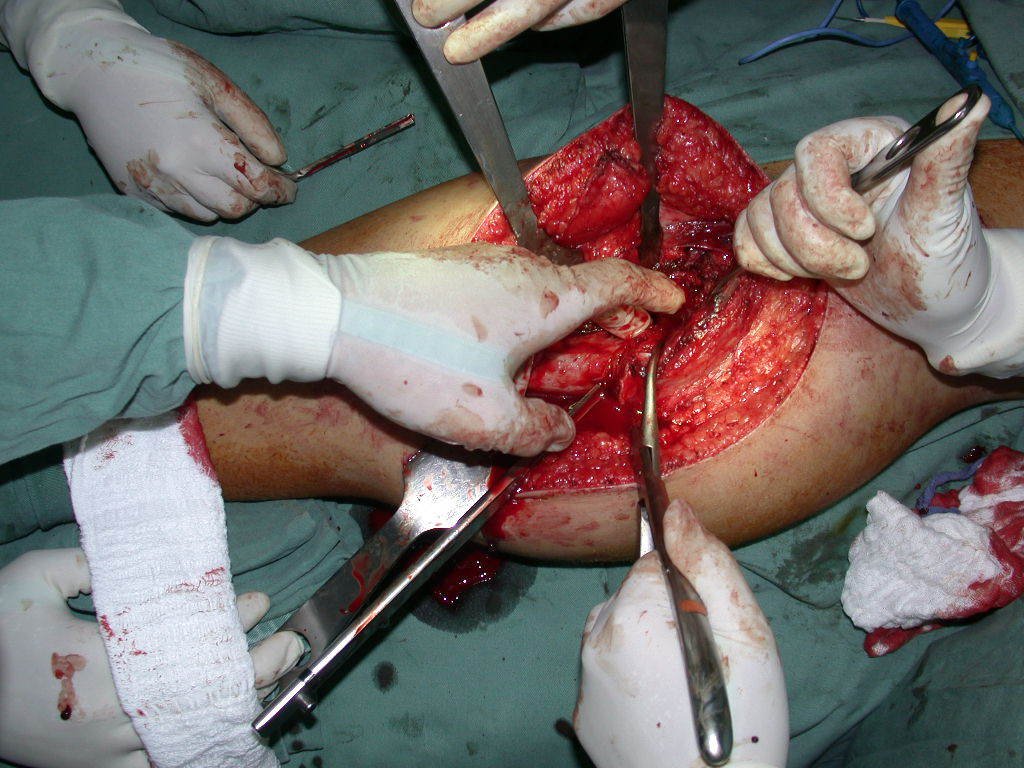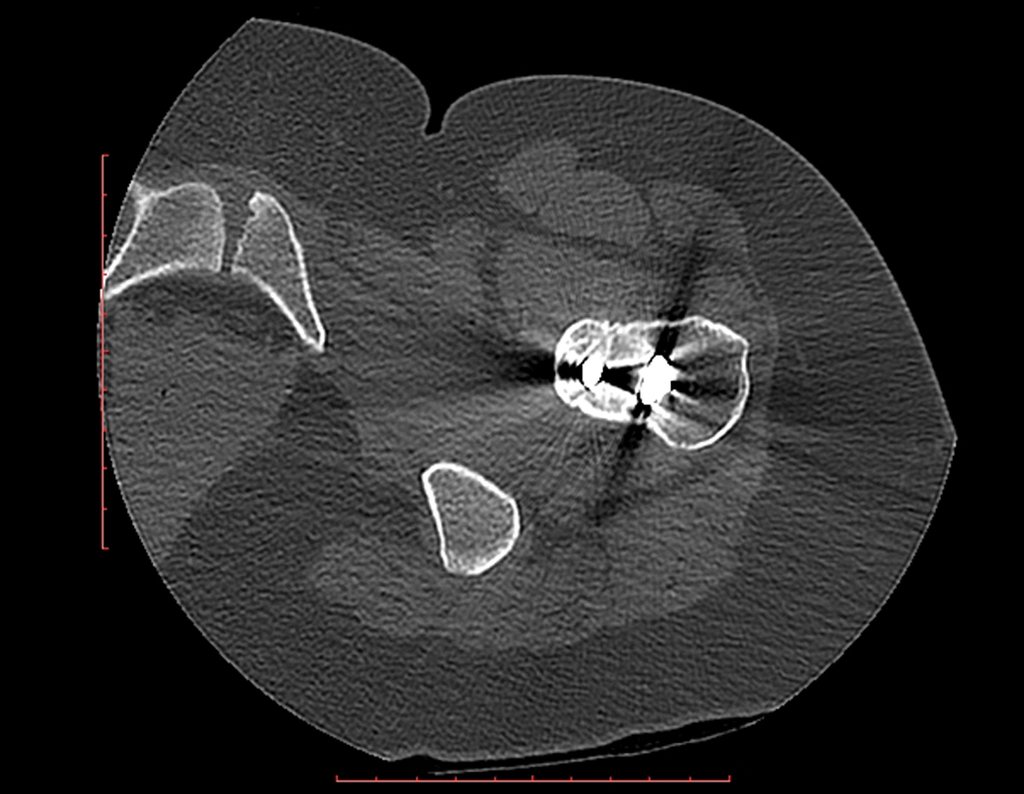Reconstruction of Femoral Neck Injury with Fracture. A 9-year-old patient, reporting pain in the left lower limb, evaluated in January 2001, underwent an x-ray of the pelvis, figure 1.
Reconstruction of femoral neck injury with fracture; Access route and special plate with autologous graft; Femoral neck bone cyst with fracture in a child
On the X-ray on that occasion, we could see a bone rarefaction lesion in the femoral neck, which was not noticed. The complaint was interpreted as growing pains, and the patient was followed up for three years.
In mid-2004, the doctor accompanying her asked another colleague to evaluate the patient’s X-ray, in a meeting in the hospital corridor. Both do not see the injury and believe it could be a “pelvis tilt”, due to the probable discrepancy of the limbs and choose to request a scanogram of the lower limbs, figures 2 to 4.
After these x-rays, the diagnosis of simple bone cyst with fracture of the femoral neck was made. The patient was referred for our evaluation and we proposed surgery to reconstruct the bone defect, curettage of the lesion and reconstruction with an autologous bone graft taken from the iliac crest, on the same side, with correction of the angular deformity. For this surgery, we planned and created a special plate that allowed the placement of a full-thread screw, internally fixing the graft block, which would serve as a column in the reconstruction, figures 11 to 19.
To perform this technique, an adequate surgical access is necessary, which allows for a broad approach and for this access to have good exposure, so as not to hinder reconstruction, reduction or osteosynthesis.
Surgical access and reconstruction are shown in figures 20 to 81.
This incision allows access that leaves the lateral aspect of the thigh completely exposed, without the need to remove the posterior part of the fasciae latae. This situation is essential to facilitate reduction and fixation with the angled plate.
Note that the fascia lata does not appear in the operative field. If we did not use this type of access, we would have a rope over the lateral surface of the thigh, making it difficult to position the plate and reduce the fragments.
After surgery, control radiographs were taken, figures 82 and 83.
The autologous graft provides earlier and better bone integration. The patient is doing well, with normal movement of the operated hip.
On March 19, 2016, we reevaluated the patient clinically and with imaging studies, figures 98 to 108 and video 1.
Video 1: Patient on 03/19/2016, twelve years after surgery. Good hip function.
The patient, now married, is well and satisfied with her role. No complaints.
Author: Prof. Dr. Pedro Péricles Ribeiro Baptista
Orthopedic Oncosurgery at the Dr. Arnaldo Vieira de Carvalho Cancer Institute
Office : Rua General Jardim, 846 – Cj 41 – Cep: 01223-010 Higienópolis São Paulo – SP
Phone: +55 11 3231-4638 Cell:+55 11 99863-5577 Email: drpprb@gmail.com











































































































